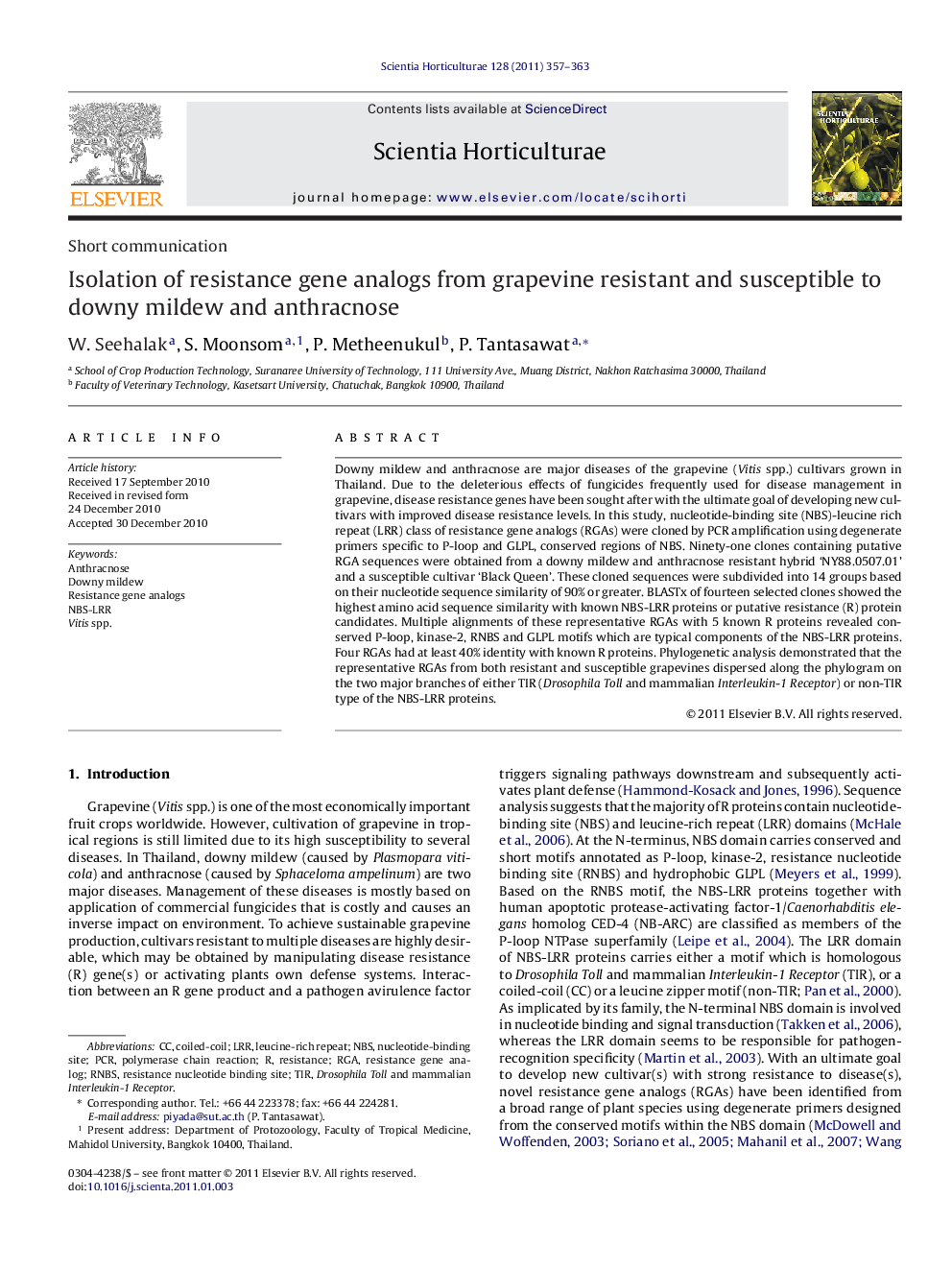| Article ID | Journal | Published Year | Pages | File Type |
|---|---|---|---|---|
| 4568296 | Scientia Horticulturae | 2011 | 7 Pages |
Downy mildew and anthracnose are major diseases of the grapevine (Vitis spp.) cultivars grown in Thailand. Due to the deleterious effects of fungicides frequently used for disease management in grapevine, disease resistance genes have been sought after with the ultimate goal of developing new cultivars with improved disease resistance levels. In this study, nucleotide-binding site (NBS)-leucine rich repeat (LRR) class of resistance gene analogs (RGAs) were cloned by PCR amplification using degenerate primers specific to P-loop and GLPL, conserved regions of NBS. Ninety-one clones containing putative RGA sequences were obtained from a downy mildew and anthracnose resistant hybrid ‘NY88.0507.01’ and a susceptible cultivar ‘Black Queen’. These cloned sequences were subdivided into 14 groups based on their nucleotide sequence similarity of 90% or greater. BLASTx of fourteen selected clones showed the highest amino acid sequence similarity with known NBS-LRR proteins or putative resistance (R) protein candidates. Multiple alignments of these representative RGAs with 5 known R proteins revealed conserved P-loop, kinase-2, RNBS and GLPL motifs which are typical components of the NBS-LRR proteins. Four RGAs had at least 40% identity with known R proteins. Phylogenetic analysis demonstrated that the representative RGAs from both resistant and susceptible grapevines dispersed along the phylogram on the two major branches of either TIR (Drosophila Toll and mammalian Interleukin-1 Receptor) or non-TIR type of the NBS-LRR proteins.
Research highlights► Resistance gene analogs are cloned from both susceptible and disease-resistant grapevines. ► Most of the RGAs cloned are highly homologous with R proteins of Vitis and various plant species. ► Three novel RGAs are obtained from a downy mildew and anthracnose resistant hybrid ‘NY88.0507.01’. ► Phylogenetic analysis classifies the cloned RGAs into two main subgroups; TIR and non-TIR.
